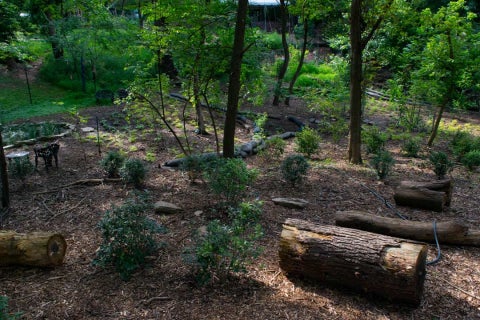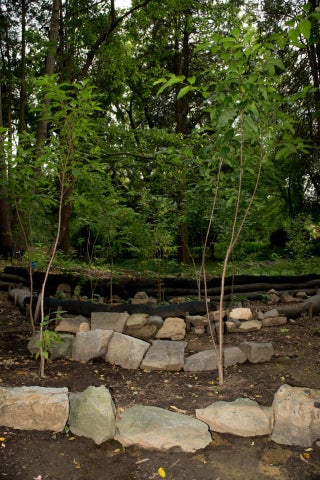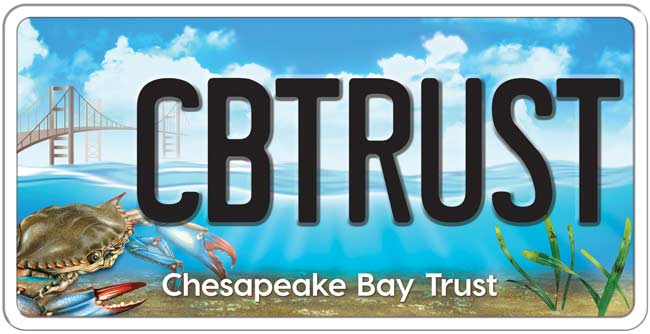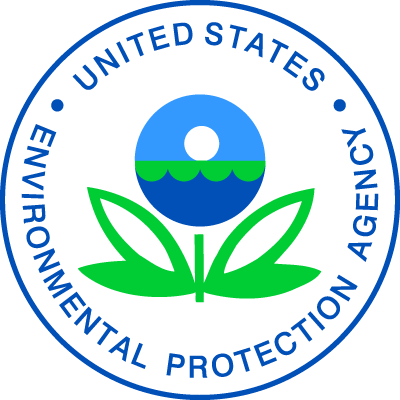Tree-Safe Rain Garden

Parts of the Chesapeake Bay watershed contain a high percentage of impervious cover – paved or other hard surfaces such as roofs and roadways that prevent rain water from being absorbed into the ground. Instead, water runs along these surfaces, collecting trash and substances such as motor oil, lawn fertilizers, and pesticides. This polluted stormwater flows into streams and rivers, where it threatens aquatic ecosystems and public health.
Effective stormwater management, on the other hand, creates safe paths for polluted runoff to be captured and filtered through the ground before it reaches waterways. This helps keep the environment clean and our communities healthy!
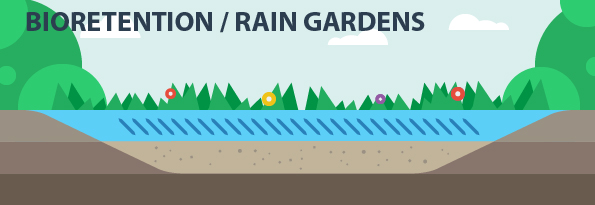
Project Location: Chevy Chase, MD
Problem: Stormwater runoff from Woodend, a 40-acre nature sanctuary in Chevy Chase, MD that serves as headquarters of the Audubon Naturalist Society, was impacting neighboring property and adding to pollution in nearby Rock Creek. Design challenges included the site’s historic registration, steep slope and existing mature trees.
Solution: To avoid disturbing the mature tree roots which are essential for soil retention and water uptake, the Audubon Naturalist Society devised a stormwater management solution that did not disturb the ground. Two terraced rain gardens with Filtrexx EnviroSoxx® permeable, compost-filled berms and additional native trees, shrubs, and plants were installed to slow and filter the stormwater.
Community Engagement: Due to the site’s educational value and highly visible location as the headquarters of a 120-year-old organization, it was important to highlight the project as a demonstration site for innovative stormwater problem solving. The organization held a 50-person community meeting to review the design plan before installation. After construction numerous workshops, educational events and tours have been held with school groups, campers, and county decision-makers to share the innovative story.
Size: 1,514 ft²
Volume of Stormwater Captured: 1,435 ft³
Pollutants Removed per year: 0.55 lbs. phosphorous, 5.4 lbs. nitrogen, 629 lbs. sediment
Total Cost: $105,323
Funding Sources: Chesapeake Bay Trust; U.S. Environmental Protection Agency; Montgomery County Water Quality Protection Fund; Wallace Genetic Foundation; Cornell Douglas Foundation
Partners: Center for Watershed Protection; Environmental Quality Resources, LLC; Chesapeake Bay Trust; Montgomery Parks

